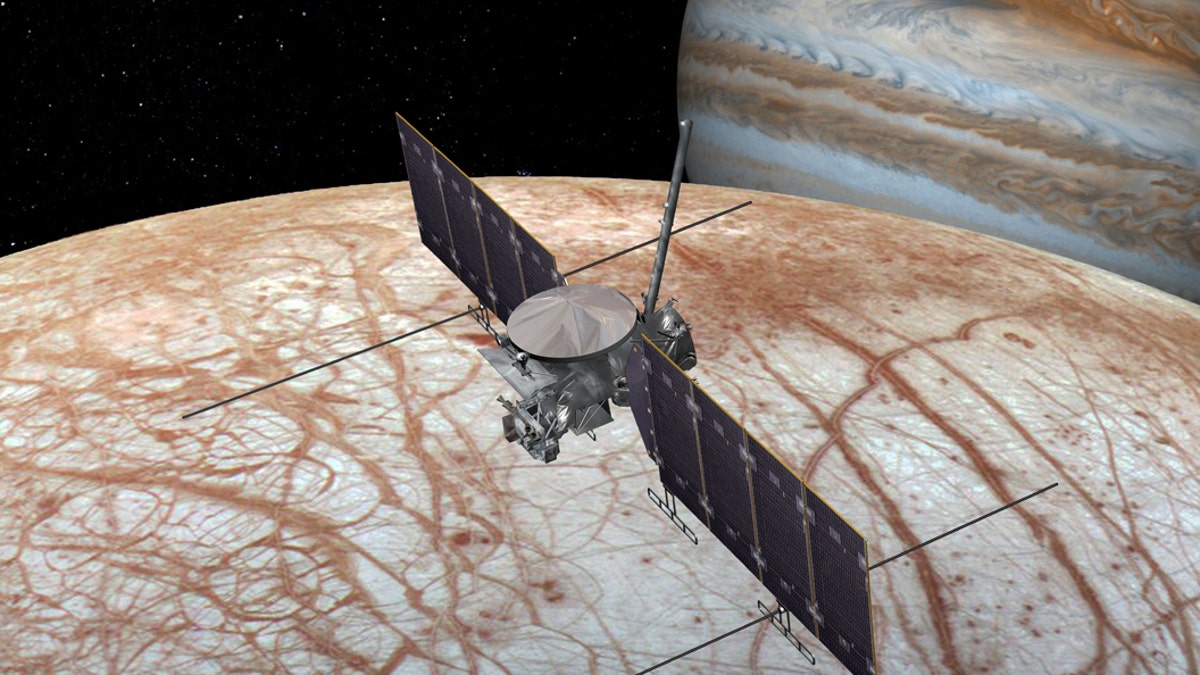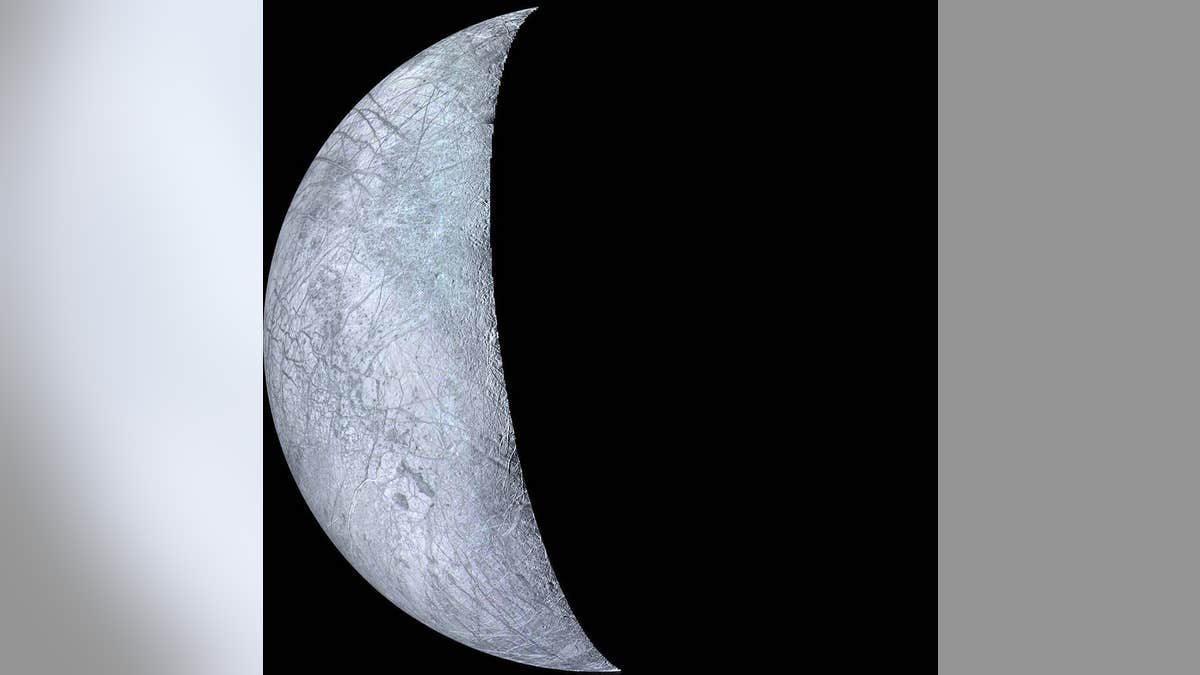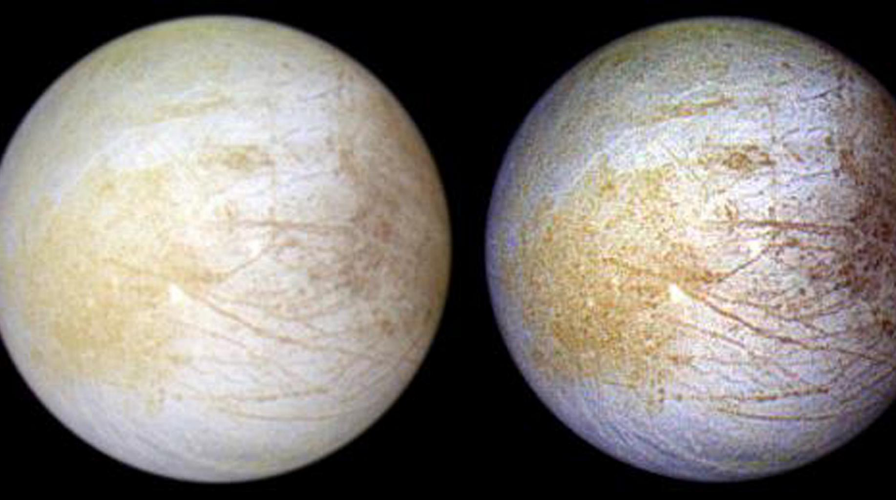Fox News Flash top headlines for June 30
Fox News Flash top headlines are here. Check out what's clicking on Foxnews.com.
With NASA slated to explore Jupiter's moon Europa sometime in the next decade, researchers are increasingly confident that the ocean on the celestial satellite "could be habitable."
Speaking at the 2020 Goldschmidt Conference earlier this month, NASA researchers said they have developed a model that shows Europa, the sixth largest moon in the Solar System, could support life.
"We were able to model the composition and physical properties of the core, silicate layer, and ocean," NASA JPL researcher and the study's lead author, Mohit Melwani Daswani, said in a statement. "We find that different minerals lose water and volatiles at different depths and temperatures. We added up these volatiles that are estimated to have been lost from the interior, and found that they are consistent with the current ocean's predicted mass, meaning that they are probably present in the ocean."

(Credit: NASA)
NASA WANTS TO USE A STEAM-POWERED ROBOT TO EXPLORE ICY MOONS THAT COULD HOST ALIEN LIFE
The research can be read here, but it has not yet been peer-reviewed.
The ocean is under a dense layer of frozen crust that is largely believed to be at least six and as many as 19 miles thick. The surface temperature on Europa is exceptionally cold as well, approximately -260 degrees Fahrenheit at the equator and -370 degrees Fahrenheit at the poles, according to Space.com.
While the ocean is widely believed to be warm, researchers are only just learning that it likely formed due to the minerals being broken down by either tidal forces or radioactive decay, according to Universe Today.
OCEAN ON JUPITER'S MOON EUROPA HAS TABLE SALT, JUST LIKE EARTH'S SEAS
"Indeed it was thought that this ocean could still be rather sulfuric," Daswani explained, "but our simulations, coupled with data from the Hubble Space Telescope, showing chloride on Europa's surface, suggests that the water most likely became chloride rich. In other words, its composition became more like oceans on Earth. We believe that this ocean could be quite habitable for life."
In August 2019, NASA confirmed it would launch a mission to Europa, a trek that could answer whether the icy celestial body could be habitable for humans and support life.

Voyager 2 snapped this image of Jupiter's moon Europa during the spacecraft's 1979 flyby. (Credit: NASA)
The Europa Clipper, which could launch as soon as 2023 but has a baseline commitment of a "launch readiness date by 2025," will have a mass spectrometer on the craft, used to determine the mass of ions in an atom.
The mission for the solar-powered Clipper is expected to cost around $4 billion, according to NASA. The space agency has previously said the purpose of the mission will be to investigate whether Europa, the sixth-largest of Jupiter's 79 known moons, "could harbor conditions suitable for life, honing our insights into astrobiology."
NASA MISSION TO EUROPA COULD 'POSSIBLY SENSE LIFE'
A 2018 study expressed concerns that Europa's surface may be extremely porous, which could harm any probe that touches down on its surface.
In December 2019, a study suggested that if there is life on Europa, it would be indigenous to the moon and not related to humans.





















